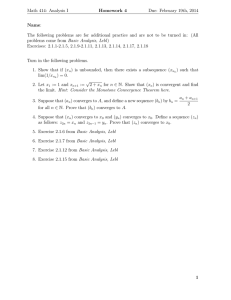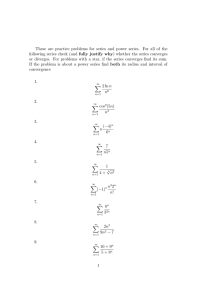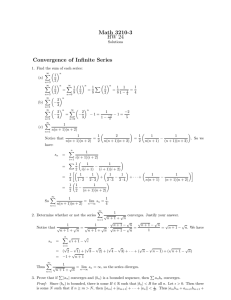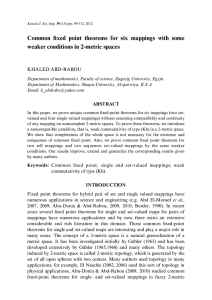Massachusetts Institute of Technology
advertisement
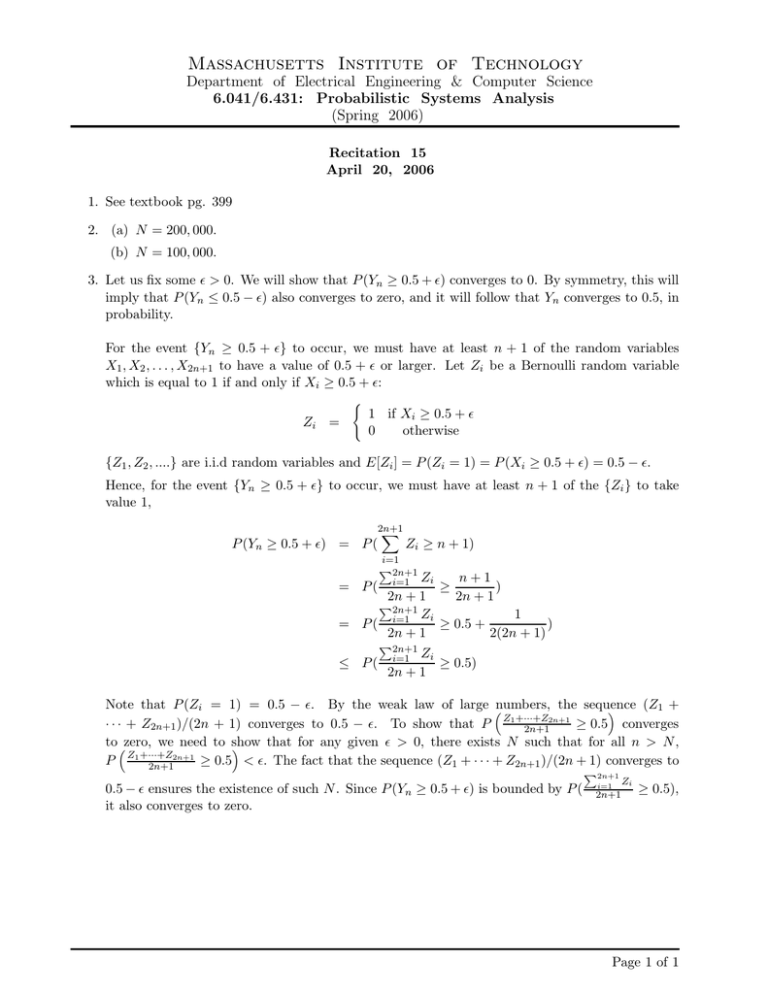
Massachusetts Institute of Technology
Department of Electrical Engineering & Computer Science
6.041/6.431: Probabilistic Systems Analysis
(Spring 2006)
Recitation 15
April 20, 2006
1. See textbook pg. 399
2. (a) N = 200, 000.
(b) N = 100, 000.
3. Let us fix some ǫ > 0. We will show that P (Yn ≥ 0.5 + ǫ) converges to 0. By symmetry, this will
imply that P (Yn ≤ 0.5 − ǫ) also converges to zero, and it will follow that Yn converges to 0.5, in
probability.
For the event {Yn ≥ 0.5 + ǫ} to occur, we must have at least n + 1 of the random variables
X1 , X2 , . . . , X2n+1 to have a value of 0.5 + ǫ or larger. Let Zi be a Bernoulli random variable
which is equal to 1 if and only if Xi ≥ 0.5 + ǫ:
Zi =
�
1 if Xi ≥ 0.5 + ǫ
0
otherwise
{Z1 , Z2 , ....} are i.i.d random variables and E[Zi ] = P (Zi = 1) = P (Xi ≥ 0.5 + ǫ) = 0.5 − ǫ.
Hence, for the event {Yn ≥ 0.5 + ǫ} to occur, we must have at least n + 1 of the {Zi } to take
value 1,
2n+1
�
P (Yn ≥ 0.5 + ǫ) = P (
= P(
Zi ≥
i=1
�2n+1
i=1 Zi
n + 1)
≥
n+1
)
2n + 1
2n + 1
Zi
1
= P ( i=1
≥ 0.5 +
)
2n + 1
2(2n + 1)
�2n+1
≤ P(
�2n+1
i=1 Zi
≥ 0.5)
2n + 1
Note that P (Zi = 1) = 0.5 − ǫ. By the weak law of large �numbers, the sequence
(Z1 +
�
Z1 +···+Z2n+1
· · · + Z2n+1 )/(2n + 1) converges to 0.5 − ǫ. To show that P
≥ 0.5 converges
2n+1
to �zero, we need to show
that
for
any
given
ǫ
>
0,
there
exists
N
such
that
for all n > N ,
�
Z1 +···+Z2n+1
P
≥ 0.5 < ǫ. The fact that the sequence (Z1 + · · · + Z2n+1 )/(2n + 1) converges to
2n+1
0.5 − ǫ ensures the existence of such N . Since P (Yn ≥ 0.5 + ǫ) is bounded by P (
it also converges to zero.
�2n+1
i=1
2n+1
Zi
≥ 0.5),
Page 1 of 1

